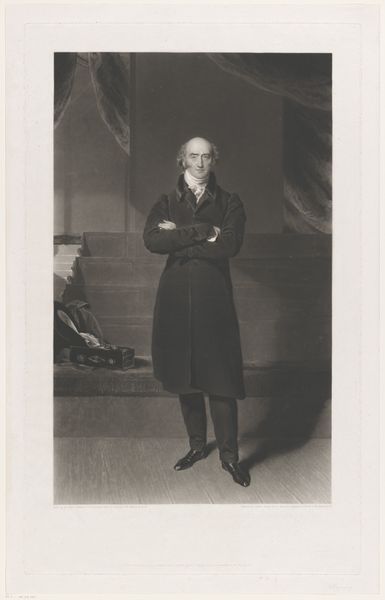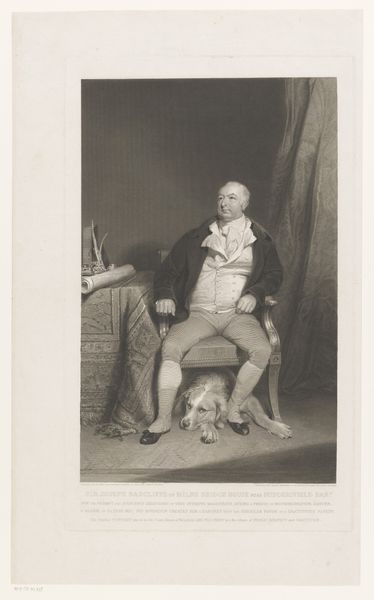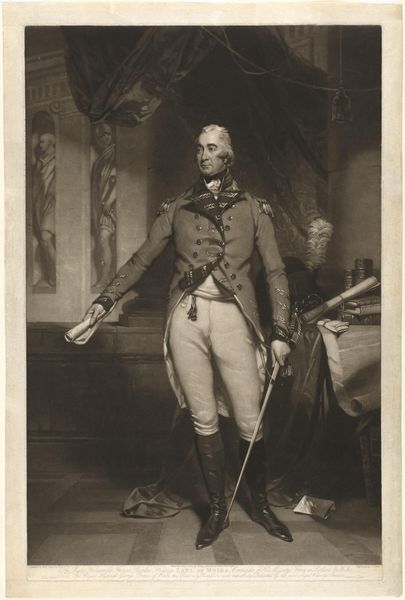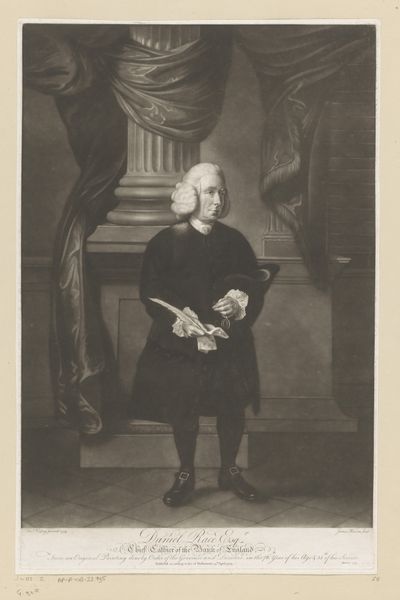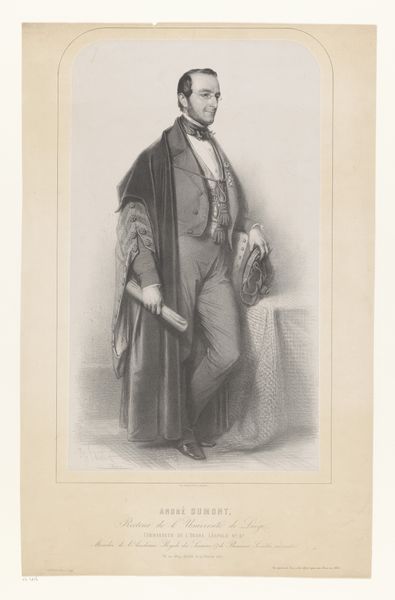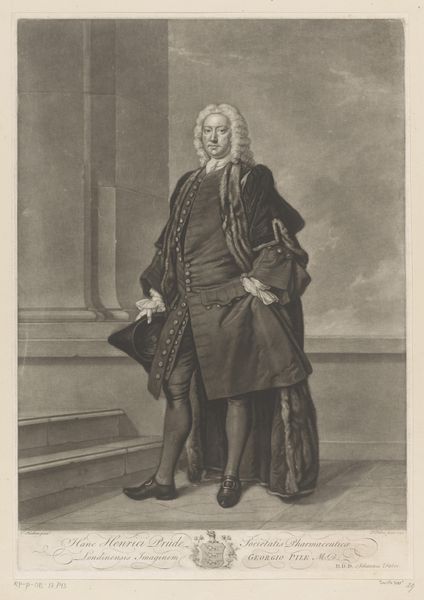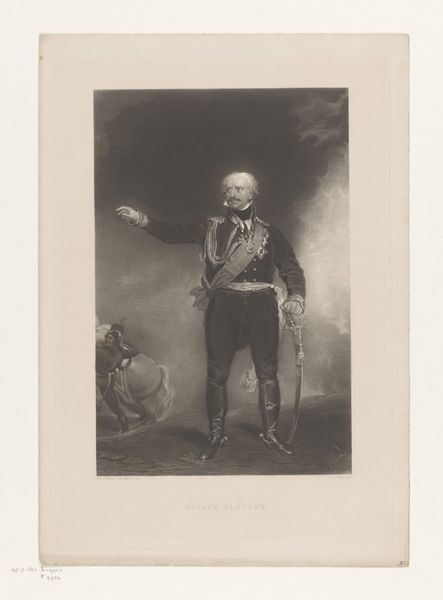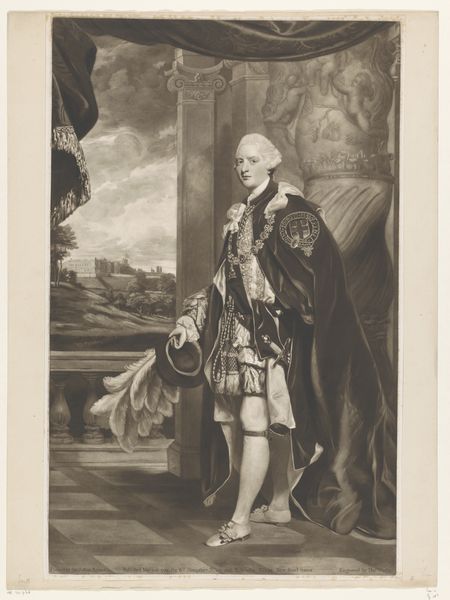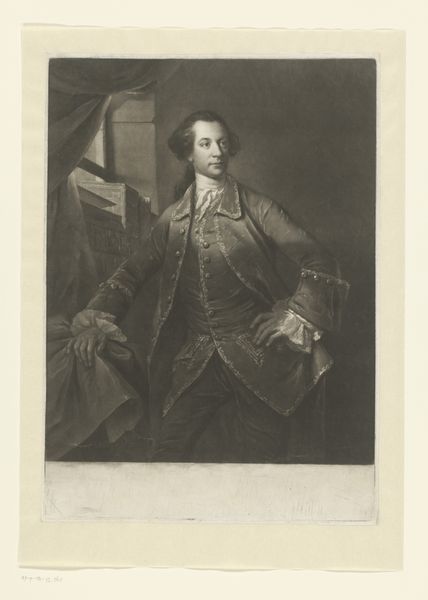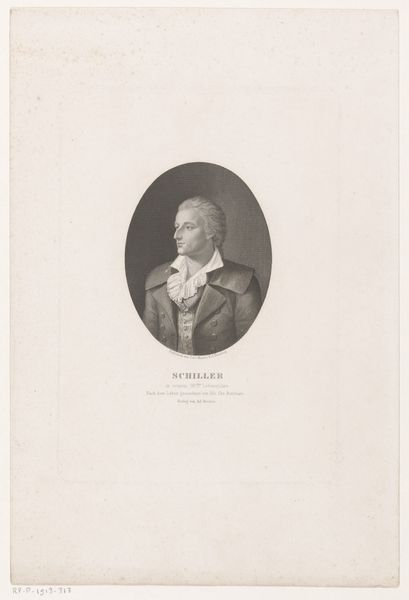
#
portrait
#
print photography
# print
#
archive photography
#
historical photography
#
romanticism
#
history-painting
#
academic-art
Dimensions: height 405 mm, width 270 mm
Copyright: Rijks Museum: Open Domain
This print of King William IV, made by Joseph Epenetus Coombs, is not simply a reproduction, but a fascinating demonstration of reproductive media. Consider the processes involved. The original image was translated onto a copper or steel plate through the skilled labor of an engraver. Using tools like burins and scrapers, they meticulously carved lines and textures, mimicking the tonal variations of the original portrait. This was a highly specialized craft, demanding years of training to master the techniques of hatching, stippling, and cross-hatching, all to create the illusion of light and shadow. The resulting plate could then be inked and printed multiple times, allowing for wider distribution of the King's image. In its own way, this print democratized portraiture, making it accessible beyond the aristocratic elite. It serves as a reminder that art and craft are deeply intertwined with the means of production, reflecting social hierarchies and the evolving technologies of their time.
Comments
No comments
Be the first to comment and join the conversation on the ultimate creative platform.
